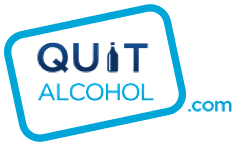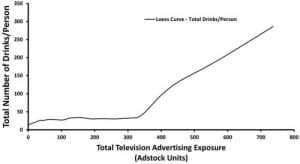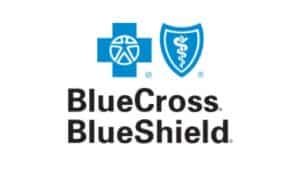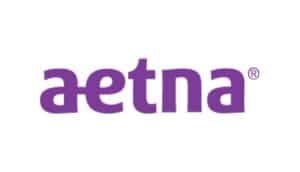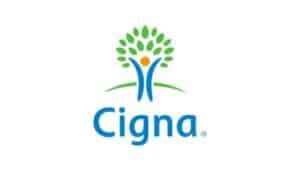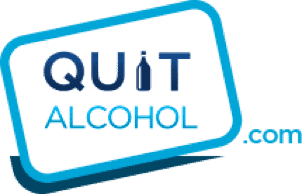No other substance is abused more by our youth than alcohol. One third of 15-year-olds have abused alcohol at least once, and the same goes for 60% of 18-year-olds. Among those between ages 12 and 20 last year, over 7.5 million had abused alcohol (more than a couple drinks) within the last month. To place that in a different perspective, over 10% of all alcohol consumed in the US is drank by those underage.
Making these matters much worse, 90% of the time people 20 and under drink, they binge drink. Over 5 million members of our youth admitted to binge drinking within the last month, according to the National Institute on Alcohol Abuse and Alcoholism (NIAAA). Nearly 1.5 million of this group admitted to binge drinking five or more times in the last month.
Now for a left turn. The average American child (aged eighteen or younger) watches 28 hours of TV a week. That’s 4 hours of TV a day. Over 25% of televised programming is commercials. Doing the math, the average child sees 7 hours of commercials a week. That’s 364 hours of commercials a year. Only 900 hours are spent in school per year. This means that the amount of time our youth spends watching television advertisements is over a third the amount of time our youth spends in a classroom.
Alcohol and Television
Clearly, young America has both a drinking problem and a TV problem. Surely a large part of the reason alcohol abuse is so prevalent among underage people stems from the fact that alcohol is legal almost everywhere, and is commonly found in American homes. There are lenient parents who let kids drink, right? It turns out less than 2% of underage drinkers get their alcohol from mom or dad. Most kids either pay for it themselves (somehow) or get it from a stranger.
Regarding TV, the American Academy of Pediatrics recommends youth watch two hours or less of television per day. Only a quarter of American children meet this recommended limit. This is what happens when 99% of American homes have one or more TV sets, and 98.5% of children turn them on every day. While alcohol consumption may not occur at home, television watching does. The effect TV has on our youth has been a topic of debate for quite some time.
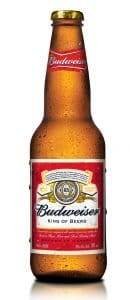 Regardless of how kids are acquiring alcohol, why they are drinking so much alcohol is the root of the problem. Numerous theories and evidence-based speculations exist as to why the underage consume alcohol. While TV cannot be blamed directly, a recent study led by Boston Medical Center concluded that “the quantity of brand-specific advertising exposure is positively associated with the total quantity of consumption of those advertised brands,” basically meaning more Budweiser ads, more Budweiser cans in the hands of the underage. It’s a brand issue on top of an exposure issue.
Regardless of how kids are acquiring alcohol, why they are drinking so much alcohol is the root of the problem. Numerous theories and evidence-based speculations exist as to why the underage consume alcohol. While TV cannot be blamed directly, a recent study led by Boston Medical Center concluded that “the quantity of brand-specific advertising exposure is positively associated with the total quantity of consumption of those advertised brands,” basically meaning more Budweiser ads, more Budweiser cans in the hands of the underage. It’s a brand issue on top of an exposure issue.
The Study
Published on Sept 07 of this year, the name of the study is Amount of Televised Alcohol Advertising Exposure and the Quantity of Alcohol Consumed by Youth. Click here for the full publication. The study was conducted by Boston Medical Center, with help from the health sciences department of Boston University, Johns Hopkins Bloomberg School of Public Health, and Fiorente Media, an independent establishment whose mission is “to understand the influence of media on human health and to use media to improve the human condition.”
The method used
The study evaluated the relationship between exposure to televised alcohol advertising for all of 2015 and the consumption of the brands advertised over the previous 30 days. 1,031 underage drinkers, ranging from 13 to 20, were used in the study. Commercials for sixty-one brands of alcohol were examined on the twenty most popular non-sporting event TV programs viewed by our youth. The amount of exposure to alcohol commercials was measured in adstock units, which essentially are measurements of cumulative advertising exposure. The conductors of the study divided the alcohol ads seen by a demographic group by the population size and multiplied by 100. The resulting figure is known as a GRP, or gross rating points. The adstock units are based on GRPs.
What they already knew going in
It’s been proven for over a decade that the more alcohol ads kids watch, the more alcohol they will consume (Bonnie & O’Connell, 2004). Also, since 2010, both the Institute of Medicine and the World Health Organization have recommended that restrictions be placed on alcohol marketing as a means of preventive intervention. It’s important to recognize that alcohol companies do not advertise on programs with audiences that are mostly children. Also, alcohol companies try to ensure their ads are not geared toward or likely to be appealing to children. These efforts are, however, self-regulated by each individual alcohol company.
Previous studies that examined the relationship between alcohol advertising and alcohol consumption did not differentiate the type of alcohol consumed. Beer, wine, liquor and liqueur were all considered, regardless of brand. This newest study on the topic addresses brand, and therefore shows a more direct link between advertising and consumption.
Lastly, it is important to note that the effects of televised advertising “are not just driven by the most recent advertising exposure, but rather are the result of cumulative advertising exposure over time,” according to the current study and referenced here. What this new study proved was the more brand-specific alcohol advertisements members of our youth are exposed to, the more of the brands advertised members of our youth will consume. TV can be dangerous, huh?
The Results
It’s no mystery advertising plays a large role in brand consumption, but sometimes it can lead to some horrific results. Directly from the study: “The average number of drinks consumed per underage youth during the past 30 days increased from 14 to 33 drinks per month as advertising exposure increased from 0 to 300 adstock units.” One conclusion that can be drawn here is that without any alcohol advertising, those who are underage drinkers would consume 14 drinks a month on average; turn on the ads and that number can climb as high as 33 drinks a month. What terrifying news.
Each 100 adstock unit increase in televised alcohol ad exposure led to a monthly increase of 5.9 drinks… until they reached 300 adstock units. That’s where things got out of hand. For those in the study who reached a 300+ adstock unit level of exposure, the monthly increase shot up to 55.7 drinks. (This author believed to have read it wrong at first.) The following graph may help explain this:
This is astounding data. The study set out to prove a brand name association with advertising and underage drinking, but discovered that “the amount of exposure to television alcohol advertising is associated with the quantity of alcohol consumed by underage youth, not just which brands they consume.” Furthermore, the authors of the study strongly suggest a revamping of alcohol advertisement altogether: “This study should prompt a reevaluation of the industry’s self-regulatory framework in order to reduce advertising exposure among underage youth. Future research should examine exposure–consumption relationships longitudinally and in other media.” If the focus truly is not on our youth, perhaps these companies should indeed further restrict their televised ad campaigns.
It was 1971 when televised advertisement of tobacco became illegal. Tobacco kills six million people a year and alcohol kills 2.5 million people a year. Today there are 28 US states that have banned tobacco use in all indoor public places. There are zero states that have banned bars, pubs, or restaurants that serve alcohol.
Similar Instances
The deeper question at hand is how much media can affect human behavior. Advertising obviously works, considering it’s still around and more aggressive than ever. Now, with this study proving that more exposure to alcohol commercials leads to more alcohol consumption, some other similar instances may come to mind. Consider violence in the media.
Watching violent movies, seeing violence on television, and playing violent video games each absolutely increase the likelihood for aggressive behavior. Over half of the attackers in all school shootings from 1974 to 2000 showed noticeable interest in violent media such as film and video games. According to the American Academy of Pediatrics, “Extensive research evidence indicates that media violence can contribute to aggressive behavior, desensitization to violence, nightmares, and fear of being harmed.”
A study conducted in 2001 by members of Iowa State University shows how especially in the case of video games, violent media leads to actual violence. “Violent video games are significantly associated with: increased aggressive behavior, thoughts, and affect; increased physiological arousal; and decreased prosocial (helping) behavior.”
With the growing popularity of streaming media, access to violence in the media is easier than ever. Children of any age can stream any video they find online, whether it be on YouTube, on Netflix, on Hulu, or any other of the countless services. Consider these facts, published by California State University Northridge and researched by the AC Nielsen Company:
- Televisions are on for 6 hrs. 47 min. in the average US home.
- 49% of Americans say they watch too much TV.
- By the time a child finishes elementary school, he or she will have seen approximately 8,000 murders on television.
- By age 18, this number explodes to 200,000.
- 79% of Americans believe violence on TV leads to violence in real life.
Moving on to advertising statistics:
- The average American child sees 20,000 thirty-second commercials a year.
- By age 65, this number is usually no lower than 2,000,000.
- 92% of Americans believe commercials geared toward the youth make children more materialistic.
- Advertising takes up approximately 30% of television airtime.
- For public service announcements, this percentage drops down to 0.7%.
- 59% of Americans can name all Three Stooges.
- 11% of the American youth cannot find The United States of America on a map.
The story this all tells is one of addiction to TV, a substance that promotes violence.
In Conclusion
Many important points were raised by this study. Initially, the researchers believed they could find a direct correlation (or lack thereof) between brand-specific alcohol ads and brand-specific consumption by our youth. While they did find there to be a correlation, it went beyond the scope of brand names. The research revealed that alcohol advertisement exposure leads to a higher consumption of alcohol regardless of brand.
What’s worse, the research shows that at the highest levels of exposure to alcohol ads, alcohol consumption skyrockets. (See graph above). “There were fewer youth with these higher levels of advertising exposure, but they consumed a disproportionately large amount of the alcohol consumed by the entire youth sample,” write the authors.
With so much television being watched, perhaps it is a good idea to tone down the amount of alcohol being advertised on TV. Exposure to certain themes in the media has been proven time and time again to influence watchers’ behavior. The amount of violence portrayed could surely be lessened as well. The bottom line is that TV affects our youth. What they are exposed to has direct effects on what they do.
Maybe TV is a drug in and of itself. Consider this quote from Dr. Norman Herr of California State University:
Heavy TV viewers exhibit five dependency symptoms–two more than necessary to arrive at a clinical diagnosis of substance abuse. These include: 1) using TV as a sedative; 2) indiscriminate viewing; 3) feeling loss of control while viewing; 4) feeling angry with oneself for watching too much; 5) inability to stop watching; and 6) feeling miserable when kept from watching.
If you notice your teen has been drinking too much or is struggling with drugs see your options here or call us today!
